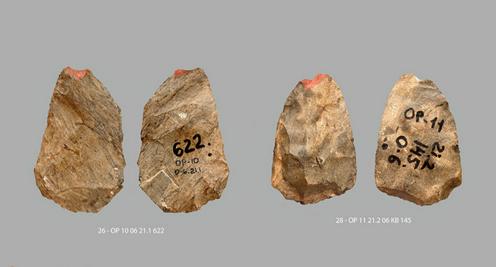Archaeologists have discovered stone arrowheads in the Obi-Rakhmat cave in Uzbekistan, estimated by specialists to be around 80,000 years old. The find could significantly change our understanding of when early humans first developed long-range hunting weapons.
An international team of researchers led by Andrey Krivoshapkin of the Institute of Archaeology and Ethnography, Siberian Branch of the Russian Academy of Sciences, analyzed about 200 miniature artifacts from ancient layers of the site. Among them, they identified 20 possible arrowheads and fragments (the full study is published in the journal PLOS.ONE).
The largest of these items weighed only 25–35 grams, with a maximum width of 41 millimeters. These artifacts are considerably older than similar finds from South Africa, France, and Sri Lanka, which are dated between 48,000 and 60,000 years ago. This may indicate that bows and arrows appeared in Eurasia much earlier than previously thought.
Remarkably, the same cave earlier yielded remains of a child aged 9–12 years, showing features of both Neanderthals and modern humans, making the identity of the toolmakers a subject of scientific debate.
The analysis confirmed that the miniature artifacts were indeed used as arrowheads, since their size and wear traces do not correspond to spears or other large projectile weapons. All this suggests that the ancient inhabitants of Central Asia may have mastered complex hunting technologies far earlier than previously believed.
The Obi-Rakhmat cave is a large natural recess, 20 meters wide, located in limestone cliffs in the Paltau River valley at an altitude of 1,250 meters, about 100 kilometers northeast of Tashkent. Discovered in 1962, it remains one of the key Paleolithic sites in Central Asia — a multilayered hunting camp with cultural deposits up to 10 meters thick, spanning a period from 40,000 to 80,000 years ago.










